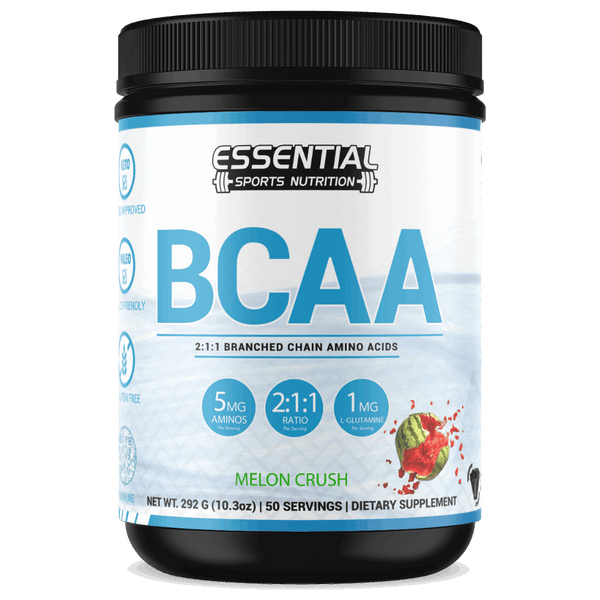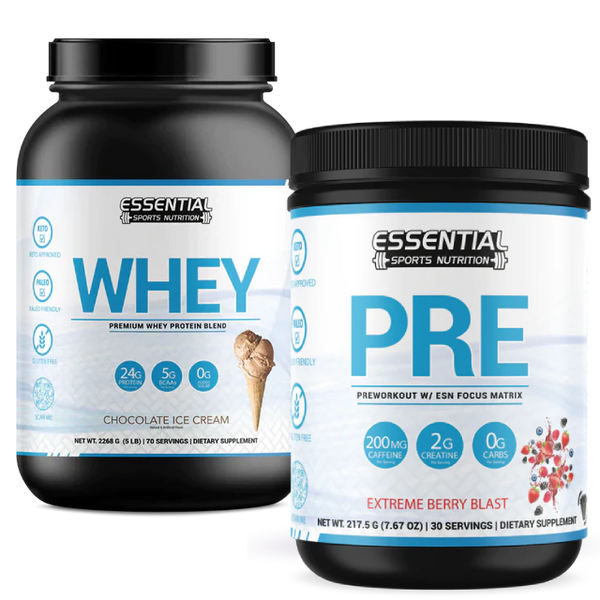Skull Crusher Exercise: Proper Form, Benefits, and Variations
To nail skull crushers, keep your back flat, knees bent, and control the weight. Benefits include isolating and balancing triceps for overall arm strength. Try variations like dumbbells or barbells for diverse grips. Watch out for common mistakes such as wrist strain or improper arm positioning. Safety is essential, so maintain hand position and start with manageable weight. Incorporate skull crushers 1-2 times weekly with challenging reps for a total body push routine. Master these tips to boost triceps gains and arm strength effectively. Your triceps will thank you for following these guidelines.

Key Takeaways
- Maintain proper form: flat back, bent knees, control weight.
- Benefits: triceps isolation, strength balance, muscle symmetry.
- Use variations: dumbbells, barbells, floor crushers, close grip.
- Avoid mistakes: wrist strain, improper arm positioning.
- Safety first: controlled movement, manageable weight, rest days.
Proper Form for Skull Crushers
To execute skull crushers with proper form, make sure your back remains flat on the bench and your knees are bent to stabilize your body throughout the exercise. This positioning is vital for targeting your triceps effectively while minimizing the risk of injury. Lower the weight towards the top of your head while keeping your upper arms perpendicular to your body. Remember not to lock your elbows at the top of the movement; this helps maintain tension on the triceps, promoting muscle engagement and growth.
As you perform each repetition, focus on controlling the weight and returning it above your chest in a smooth and deliberate manner. By concentrating on engaging your triceps throughout the exercise, you can maximize muscle activation and ultimately reap the benefits of this challenging yet rewarding movement. Proper form enhances the effectiveness of the skull crusher exercise and reduces the likelihood of strain on other muscle groups. So, next time you hit the gym, ensure your form is on point for those skull crushers.
Benefits of Skull Crushers

Skull crushers are effective for targeting and strengthening the triceps muscle group, aiding in muscle isolation and balanced arm development. Here are some benefits of incorporating skull crushers into your workout routine:
- Triceps Focus: By specifically targeting the triceps, skull crushers help isolate and work this muscle group effectively.
- Improve Imbalances: Skull crushers can aid in correcting triceps imbalances, leading to better overall arm strength and symmetry.
- Enhanced Strength: Regularly performing skull crushers can boost triceps strength, benefiting daily activities and contributing to upper body strength gains.
These benefits highlight the importance of including skull crushers in your arm workout regimen. Not only do they target the triceps thoroughly, but they also offer advantages for muscle balance and functional strength.
Variations of Skull Crushers
When exploring variations of skull crushers, you can diversify your triceps workout by incorporating different equipment and angles for enhanced muscle engagement. Using dumbbells, barbells, or an EZ bar offers varying degrees of grip and wrist positions, targeting the triceps from different angles. Floor skull crushers, where you lie on the floor instead of a bench, provide a unique challenge by altering the range of motion. Incline lying triceps extensions adjust the bench angle to increase the difficulty and emphasize the triceps. Barbell skull crushers differ from dumbbells by offering a different grip and wrist position, adding variety to your triceps routine. Close grip skull crushers are ideal for targeting the triceps specifically, as the narrower hand placement increases the triceps' engagement. Experimenting with these variations can help you break plateaus, prevent boredom, and promote well-rounded triceps development.
Common Mistakes With Skull Crushers

When performing skull crushers, be mindful of your arm positioning to prevent wrist strain. Maintaining proper form is essential for avoiding injuries and maximizing tricep engagement during the exercise. Stay focused on controlling the movement to your forehead to guarantee a safe and effective workout.
Proper Arm Positioning
To guarantee maximum triceps engagement and avoid strain during skull crushers, focus on maintaining perpendicular upper arms throughout the exercise. Here are some key points to help you with proper arm positioning:
- Confirm your upper arms are perpendicular to the body for effective triceps targeting.
- Avoid locking your elbows to maintain muscle engagement and prevent strain.
- Keep a narrow grip with wrists straight to minimize stress on the joints and activate the triceps efficiently.
Avoiding Wrist Strain
Maintain a neutral wrist position to safeguard against strain while performing skull crushers. Avoid excessive bending or extension of the wrists to reduce the risk of injury. Focus on wrist alignment with the forearm to support proper form and muscle engagement. Use an EZ bar or dumbbells with a comfortable grip to alleviate wrist discomfort. Engage forearm muscles to stabilize the wrists and minimize strain during skull crushers.
| Common Mistakes to Avoid | Tips to Prevent Wrist Strain |
|---|---|
| Excessive wrist bending or extension | Keep wrists aligned with forearms |
| Using uncomfortable grips | Opt for EZ bar or comfortable dumbbells |
| Neglecting forearm engagement | Activate forearm muscles for stability |
Safety Tips for Skull Crushers
Ensuring correct hand placement and maintaining controlled movements is essential for maximum safety during skull crushers. To keep you safe and injury-free while performing this exercise, consider the following tips:
- Proper Hand Position: Place your hands slightly wider than shoulder-width apart on the barbell to reduce strain on your wrists and elbows.
- Controlled Movements: Lower the weight in a slow and controlled manner, keeping your elbows tucked in and avoiding sudden or jerky movements.
- Gradual Progression: Start with a manageable weight and a few repetitions, gradually increasing the intensity to prevent overloading your triceps and elbows.
Incorporating Skull Crushers Into Your Workout

When incorporating skull crushers into your workout routine, prioritize maximum triceps development by performing the exercise 1-2 times a week with challenging weight for 3 sets of 10-12 reps. This frequency allows for adequate stimulation without overtraining, promoting muscle growth and strength gains. Make sure you rest for 24-48 hours between skull crusher sessions to give your triceps ample time to recover and repair.
To optimize your workout, include skull crushers in a total body push routine to target multiple muscle groups effectively. Integrating this exercise into your training plan can enhance your upper body strength and improve overall muscle balance. Additionally, consider gradually increasing the weight you use during skull crushers to challenge your triceps and continuously stimulate further development.
Incorporating skull crushers with proper form and intensity can be a valuable addition to your workout regimen, contributing to well-rounded triceps development and upper-body strength. Stay consistent, push your limits safely, and watch as your triceps grow stronger with each session.
Advanced Tips for Skull Crushers
To enhance your skull crushers exercise, consider implementing advanced tips that focus on maximizing triceps engagement and overall effectiveness.
- Maintain a tight grip: Guarantee a secure hold on the barbell to prevent any slipping that could disrupt your form and concentration.
- Controlled descent: Focus on a slow and deliberate lowering phase to fully engage and target your triceps during the movement.
- Pause at the bottom: Introduce brief pauses at the bottom position of the skull crusher to increase the time your triceps are under tension, promoting muscle growth and strength.
Conclusion

To sum up, mastering proper form, exploring variations, and avoiding common mistakes can help you reap the benefits of skull crushers in your workout routine. Remember, practice makes perfect, so don't throw in the towel just yet. Keep pushing yourself; soon enough, you'll be crushing your fitness goals easily. So, don't be afraid to think outside the box and mix things up - after all, variety is the spice of life!
Benefits of Doing Skull Crushers and Muscles Worked FAQs
Q: What muscles do skull crushers work?
A: Skull crushers primarily work the triceps, specifically targeting the long head of the triceps.
Q: What are the benefits of doing skull crushers?
A: Skull crushers can help build muscle mass in the triceps, improve elbow extension strength, and are an effective isolation exercise for targeting the triceps.
Q: Are there skullcrusher variations?
A: Yes, there are various skull crusher variations including using dumbbells, a cable machine, or different grip variations with a barbell or EZ bar.
Q: How can skull crushers help to build muscle?
A: Skull crushers work the triceps, which are important muscles for pressing exercises, helping to strengthen and build muscle in the arms.
Q: What is the proper form for a barbell skull crusher?
A: The proper form for a barbell skull crusher involves lowering the bar towards your head while keeping your elbows stationary, then extending your elbows to lift the bar back up.
Q: Can skull crushers be done with dumbbells?
A: Yes, skull crushers can be performed with a pair of dumbbells by following the same movement pattern as with a barbell or EZ bar.
Q: What Is the Correct Way to Do Skull Crushers?
A: When doing skull crushers, lie on a bench and lower the weight towards your head, keeping your arms perpendicular. Avoid locking elbows and maintain control. Proper form is essential for targeting the triceps effectively and preventing injury.
Q: What Effect Does Skull Crushers Have?
A: When you perform skull crushers, you target your triceps intensely, enhancing muscle growth and strength. This exercise boosts your bench press abilities and refines your throwing skills, making it a valuable addition to your workout routine.




























